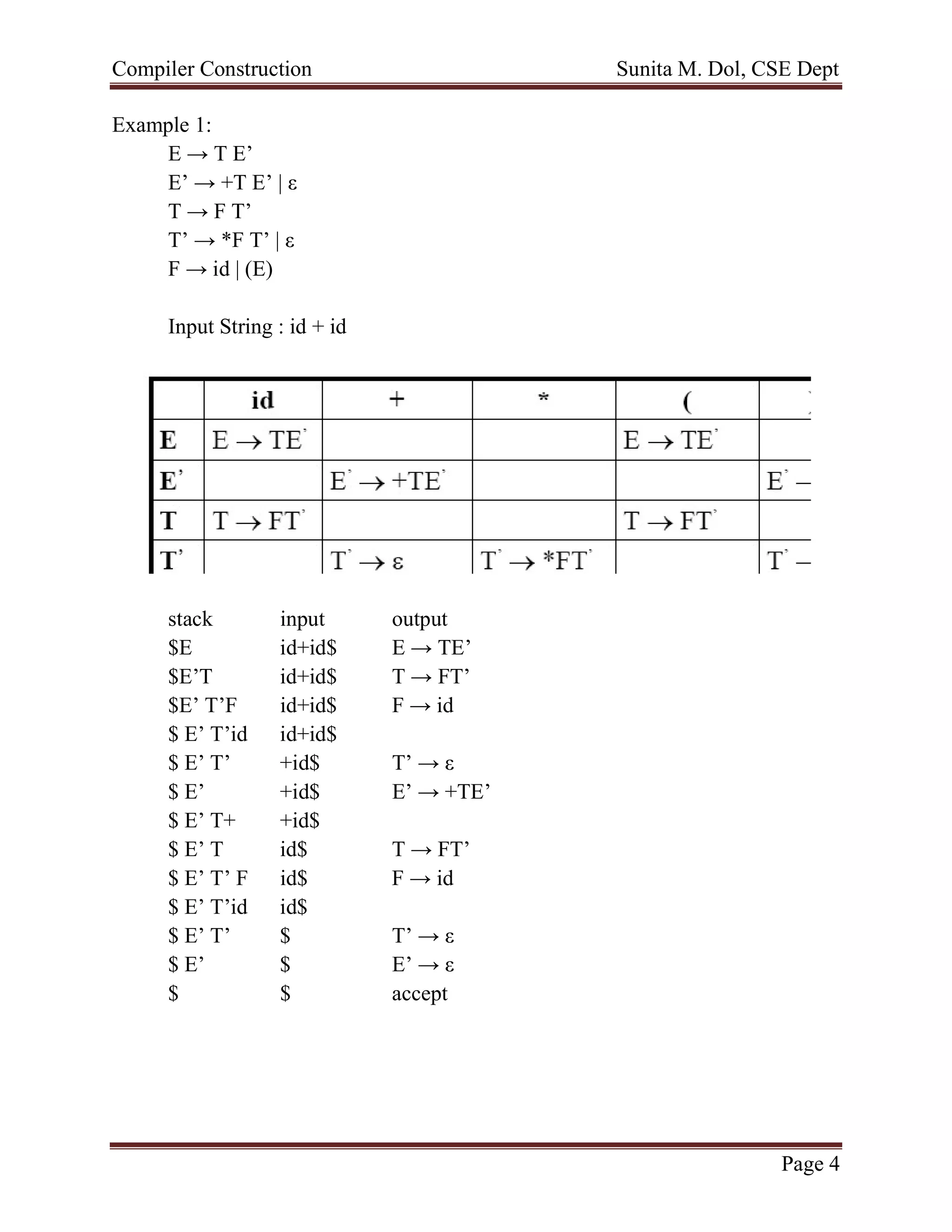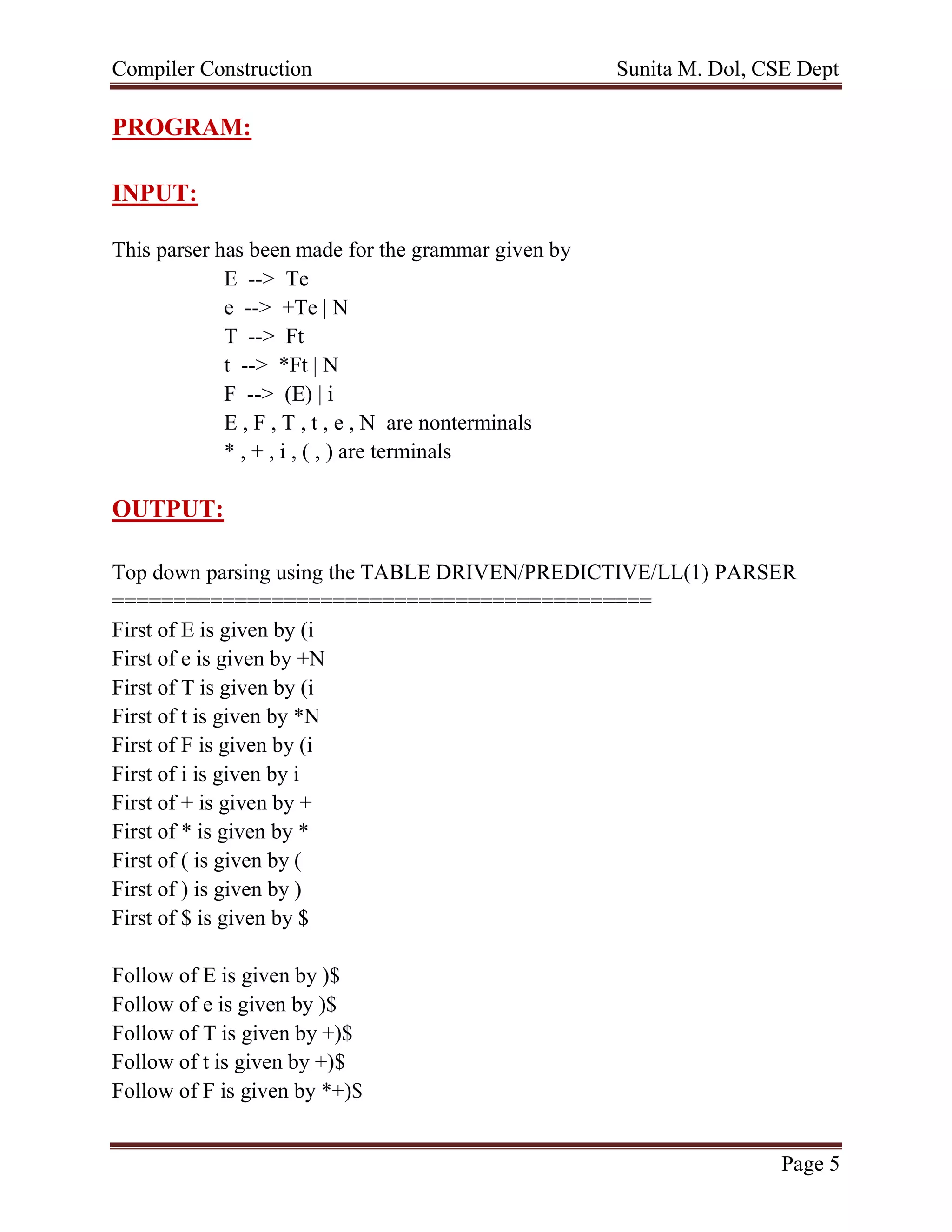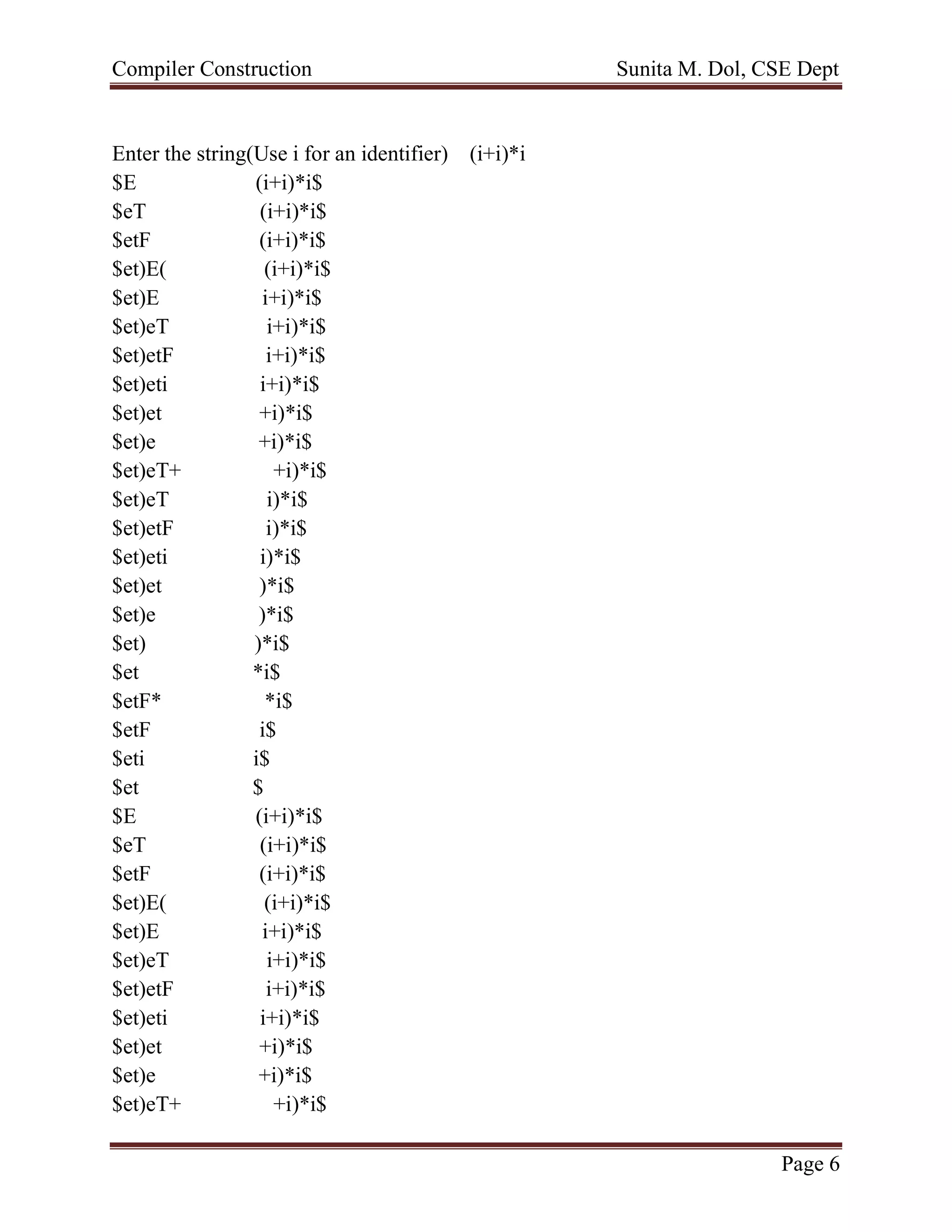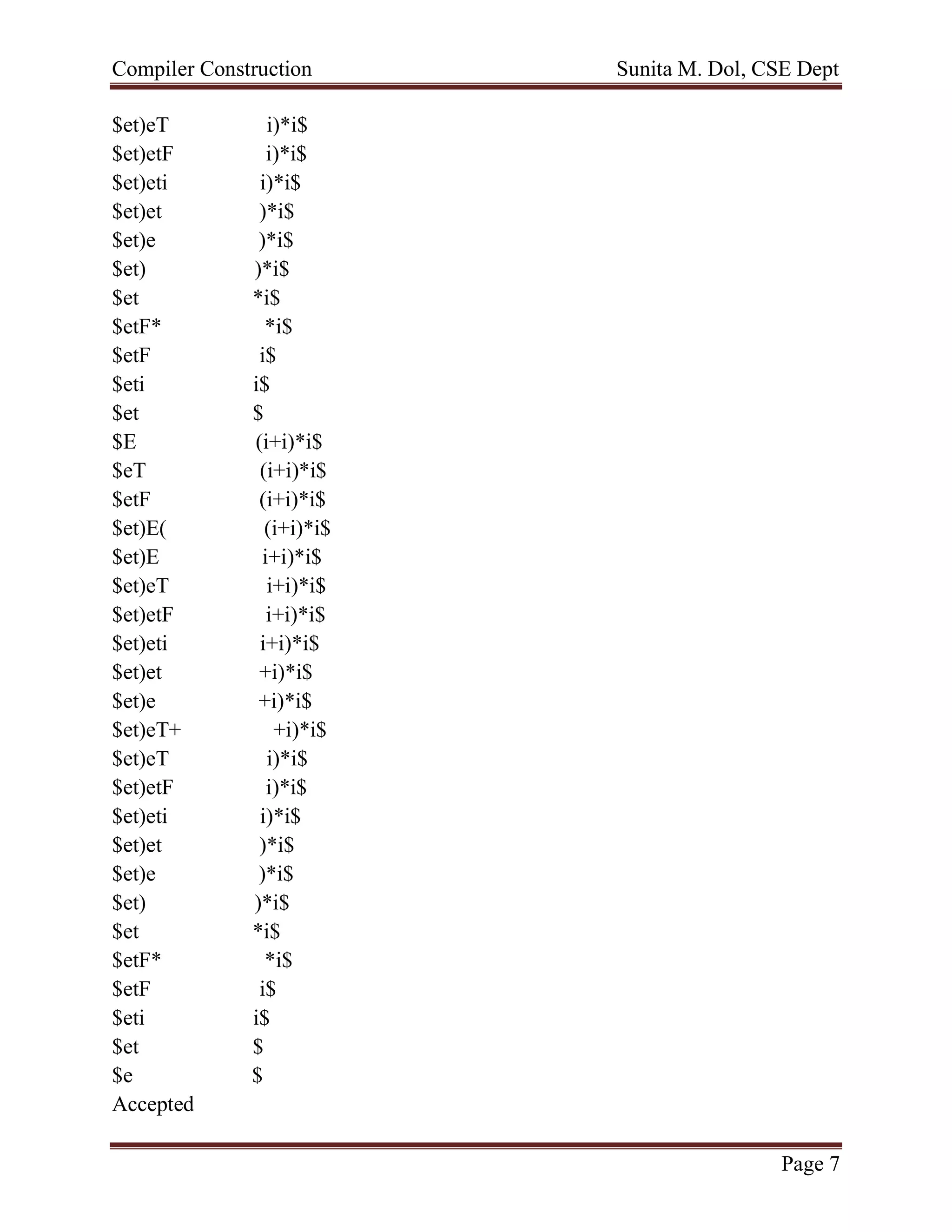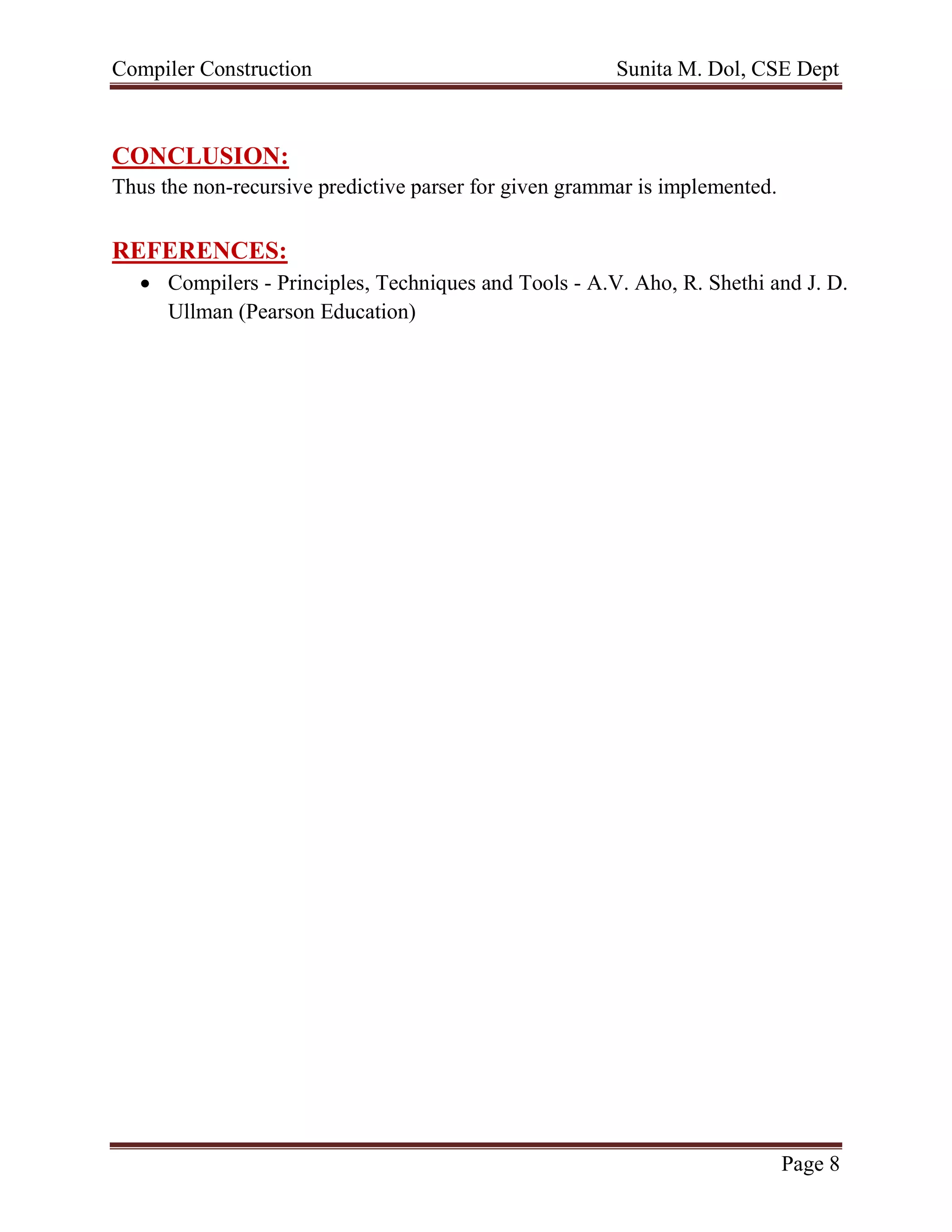The document describes implementing a non-recursive predictive parser for a language. It discusses top-down parsing and how a non-recursive predictive parser works by maintaining a stack explicitly and looking up productions in a parsing table. An example grammar and string are parsed step-by-step using this technique to demonstrate the parser's operation.

![Compiler Construction Sunita M. Dol, CSE Dept
Page 2
A table-driven predictive parser has an input buffer, a stack, a parsing table, and an
output stream. The input buffer contains the string to be parsed, followed by $, a
symbol used as a right end-marker to indicate the end of the input string. The stack
contains a sequence of grammar symbols with $ on the bottom, indicating the
bottom of the stack. Initially, the stack contains the start symbol of the grammar on
top of $. The parsing table is a two dimensional array M[A, a], where capital A is a
nonterminal, and small a is a terminal or the symbol $.
In parsing table, each row is a non-terminal symbol, each column is a terminal
symbol or the special symbol $ and each entry holds a production rule.
The parser is controlled by a program that behaves as follows. The program
considers X, the symbol on top of the stack, and a, the current input symbol. These
two symbols determine the action of the parser. There are four possible parser
actions.
1. If X = a = $ then the parser halts and announces successful completion of
parsing
2. If X and a are the same terminal symbol (different from $) that is X = a
which is not equal to $ then parser pops X from the stack, and advances the
input pointer to the next input symbol,
3. If X is a non-terminal, the program consults the parsing table entry M[X,a].
If M[X,a] holds a production rule X→Y1Y2...Yk, it pops X from the stack
and pushes Yk,Yk-1,...,Y1 into the stack. The parser also outputs the
production rule X→Y1Y2...Yk to represent a step of the derivation.
4. If none of the above then error. All empty entries in the parsing table are
errors and the parser calls an error recovery routine. If X is a terminal
symbol different from a, this is also an error case.
Non- Recursive Predictive parser Algorithm
INPUT: A string w and a parsing table M for grammar G.
OUTPUT: If w is in L(G), a leftmost derivation of w; otherwise, an error
indication.
METHOD: Initially, the parser is in a configuration with w$ in the input buffer
and the start symbol S of grammar G on top of the stack, above $. The flowchart
shown below uses the predictive parsing table M to produce a predictive parse for
the input.
set ip to point to the first symbol of w;](https://image.slidesharecdn.com/assignment10-211001092534/75/Assignment10-2-2048.jpg)
![Compiler Construction Sunita M. Dol, CSE Dept
Page 3
repeat
Let X be the top stack symbol and a the symbol pointed by ip;
if X is a terminal or $ then
if X=a then
pop X from the stack and advance ip
else error()
else /* X is a non-terminal */
if M[X,a] = X -> Y1Y2 •••Yk then
begin
pop X from the stack
push Yk, Yk-i,... ,Y1 onto the stack, with Y1 on top;
output the production X -> Y1 Y2 • • • Yk;
end
else error()
until X=$ /* stack is empty */
Consider the grammar given below. A predictive parsing table for this grammar is
shown in Fig. In parsing table, Blanks are error entries while non-blanks indicate a
production with which to expand the top nonterminal on the stack. The input string
is id+id.
With input id + id; the predictive parser makes the sequence of moves shown
below. Initially, the parser is in a configuration with w$ that is id+id$ in the input
buffer and the start symbol E of grammar G on top of the stack, above $. The input
pointer points to the leftmost symbol of the string in the INPUT column. The
parser traces out a Leftmost derivation for the Input, that is, the productions output
are those of a leftmost derivation. The input symbols that have already been
scanned, followed by the grammar symbol on the stack (from the top to bottom),
make up the left-sentential forms in the derivation.
Finally stack as well as input contains the $ hence the parser halts and announces
successful completion of parsing](https://image.slidesharecdn.com/assignment10-211001092534/75/Assignment10-3-2048.jpg)
